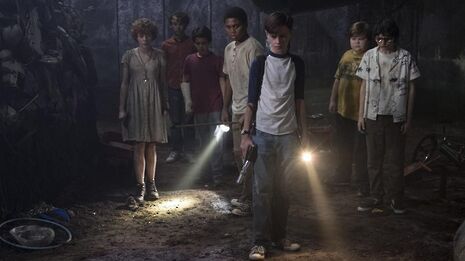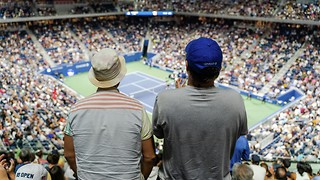Review: It moves beyond fear
Far from terrified, Danielle Cameron finds something deeper in the latest Stephen King adaptation than the surface of killer clowns and smattered jump scares

One brief but important matter needs to be addressed before discussing Andy Muschetti’s It in earnest: the film is just not that scary. Of course, anyone with a serious fear of clowns (child-devouring or otherwise) will most likely disagree, but hear this out. Realising It is not just a fright vehicle allows a clearer appreciation of the wider aspects of Muschetti’s otherwise excellent offering to the horror cinema canon.
Upon leaving the cinema, where jump scares had abounded, not many of these frights – albeit well crafted – linger in the memory. Instead, one is left reflecting upon the variety of emotions written and deftly performed throughout It. If Pennywise the clown is the film’s bark, The Losers’ Club’s fight against evil is It’s bite.
“While It’s opening sequence is as beautiful as it is chilling, the frequency of jump scares has bred a sense of indifference by the denouement.”
Such a dynamic is hardly surprising when considering Stephen King’s 1986 doorstopper of a novel, and other films based on his oeuvre. From Rob Reiner’s timeless Stand by Me to the recent misfire of The Dark Tower, losses of childhood innocence permeate adaptations’ direction and screenplays. Rightly so, as King is an author who powerfully unearths humanity’s place in horror, and vice versa.
In an attempt to navigate King’s novel – as well as setting up the sequel – Chase Palmer, Cary Fukunaga and Gary Dauberman’s screenplay foregrounds the protagonists’ childhoods. With shots of The Losers’ Club riding their bikes while uniting against a dark unknown, there are palpable resemblances to Reiner’s adaptation of Stand By Me as well as to another 1980s nostalgia-fest, Stranger Things. Hardly a bad comparison but, as a result, the pressure upon the dark unknown to be suitably terrifying to match the emotionally complex child ensemble becomes higher.
Nevertheless, Bill Skarsgård’s interpretation of Pennywise, the main manifestation of the eponymous It whose appearance corresponds with one’s darkest fear, is stunning. Muschetti has discussed the casting of Skarsgård due to the actor’s childlike and terrifying performance, and both qualities shine. Indeed, Skarsgård’s presence expertly complements Muschetti’s eye for striking, haunting images. However, the film’s pacing ultimately leads to diminishing returns from ever-increasing fright pieces. While It’s opening sequence is as beautiful as it is chilling, the frequency of jump scares has bred a sense of indifference by the denouement.
While jump scares pile on thick and fast, the central child performances go from strength to strength. Only two of the The Losers’ Club may look familiar (Midnight Special’s Jaeden Lieberher and Stranger Things’ Finn Wolfhard), but all of the young actors are impressive. Indeed, Sophia Lillis and Chosen Jacobs excel in their first major roles. All together, the actors create a believable and moving account of friends entering the literal and figurative battlefield of adolescence. Without the Losers’ performances, attention would very much wane throughout.
Ultimately, It left me wanting more in the best kind of way – more enduring scares, more of The Losers’ Club and their defending of Derry – and this speaks to its success as an opening chapter to a two-part franchise. Muschetti and his cast have created a wildly successful film on multiple levels, and one can only hope that the next film will push matters further
 Features / The community Cambridge accommodation creates (and doesn’t)9 August 2025
Features / The community Cambridge accommodation creates (and doesn’t)9 August 2025 News / Trinity sells O2 Arena lease for £90m12 August 2025
News / Trinity sells O2 Arena lease for £90m12 August 2025 Lifestyle / An ode to college accommodation11 August 2025
Lifestyle / An ode to college accommodation11 August 2025 Sport / ‘A full-time job with overtime’: should disparities change the way we approach Bumps?6 August 2025
Sport / ‘A full-time job with overtime’: should disparities change the way we approach Bumps?6 August 2025 Features / Incoming freshers and their hopes, fears and expectations for Cambridge 12 August 2025
Features / Incoming freshers and their hopes, fears and expectations for Cambridge 12 August 2025









